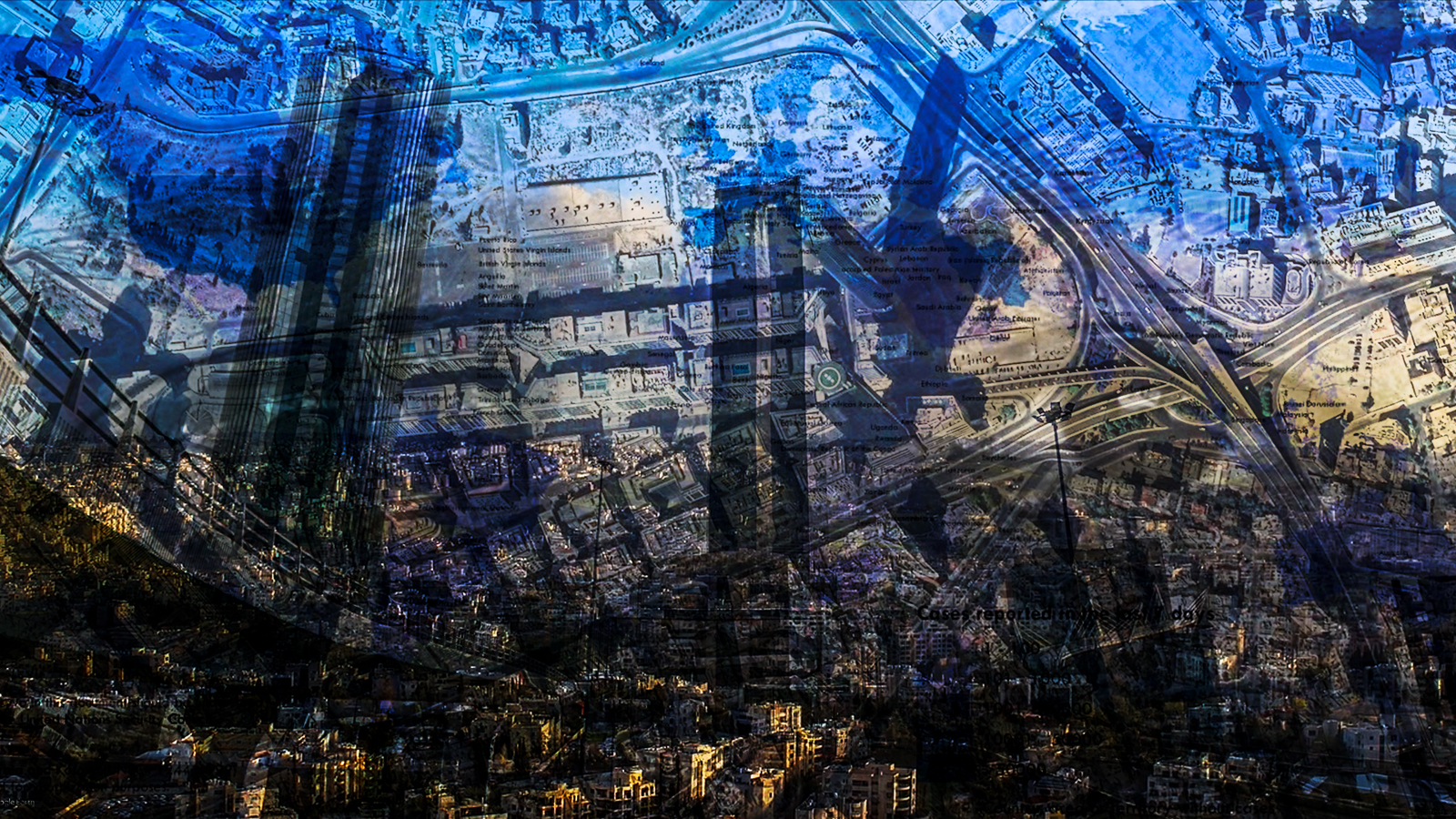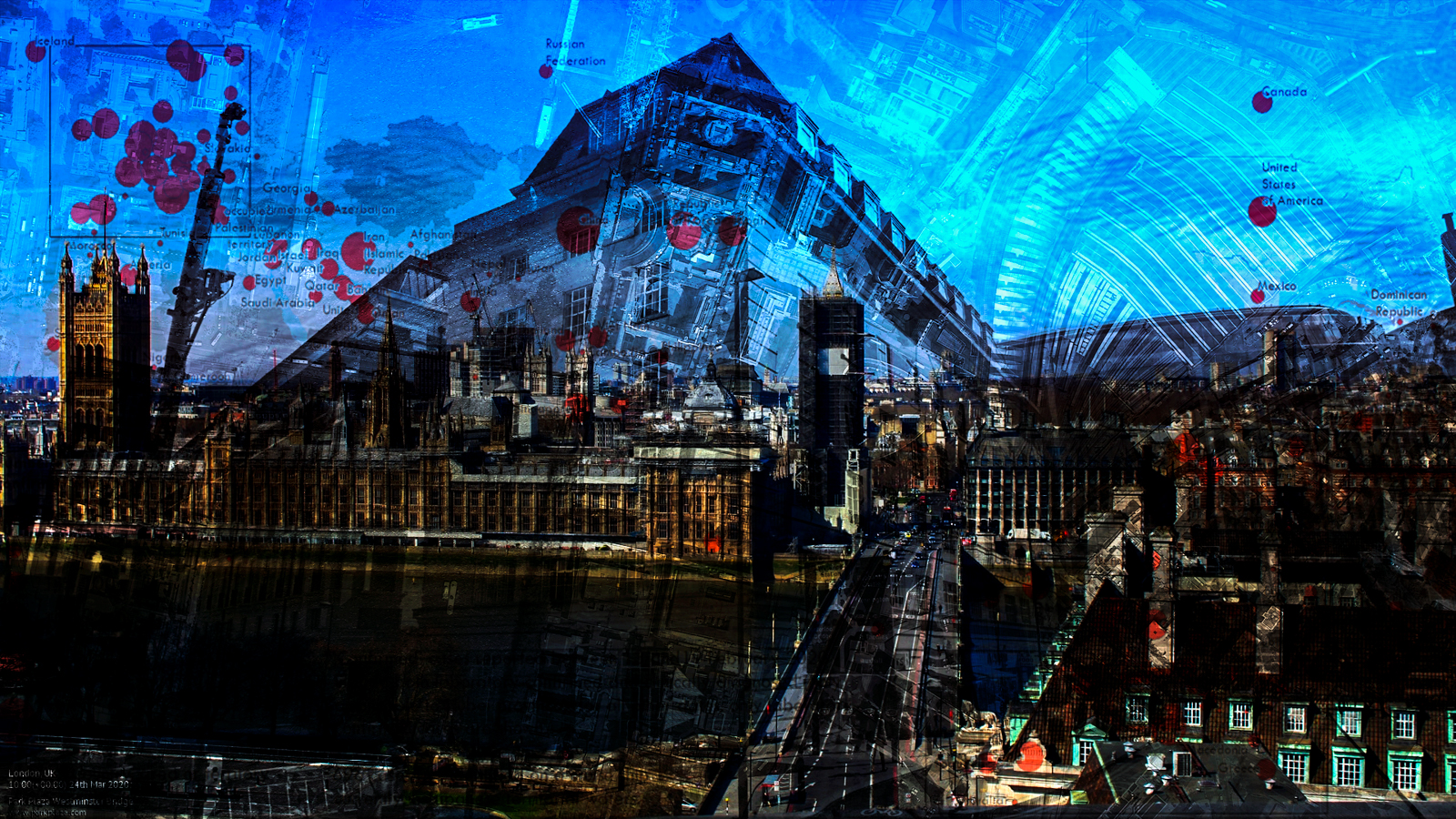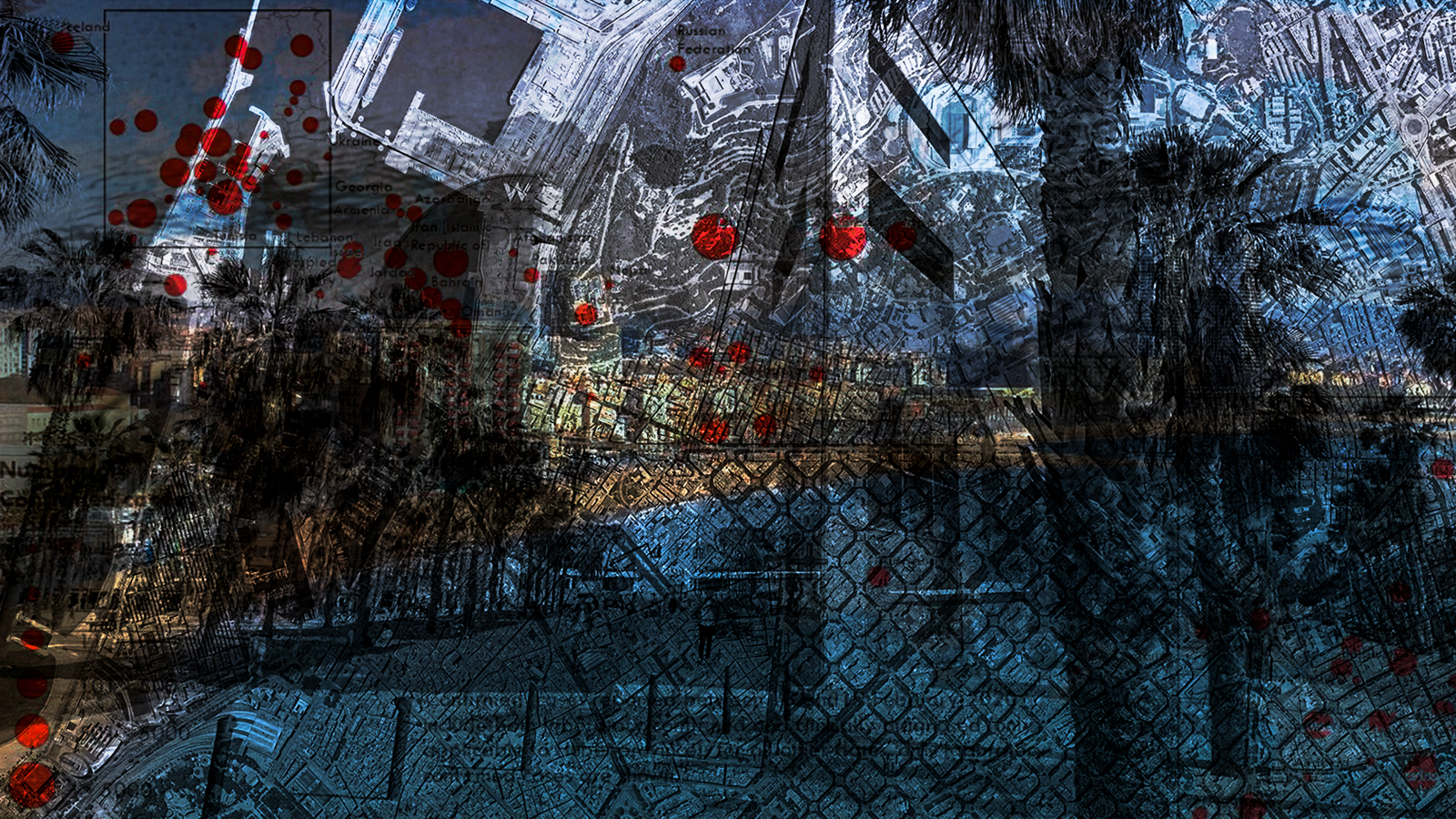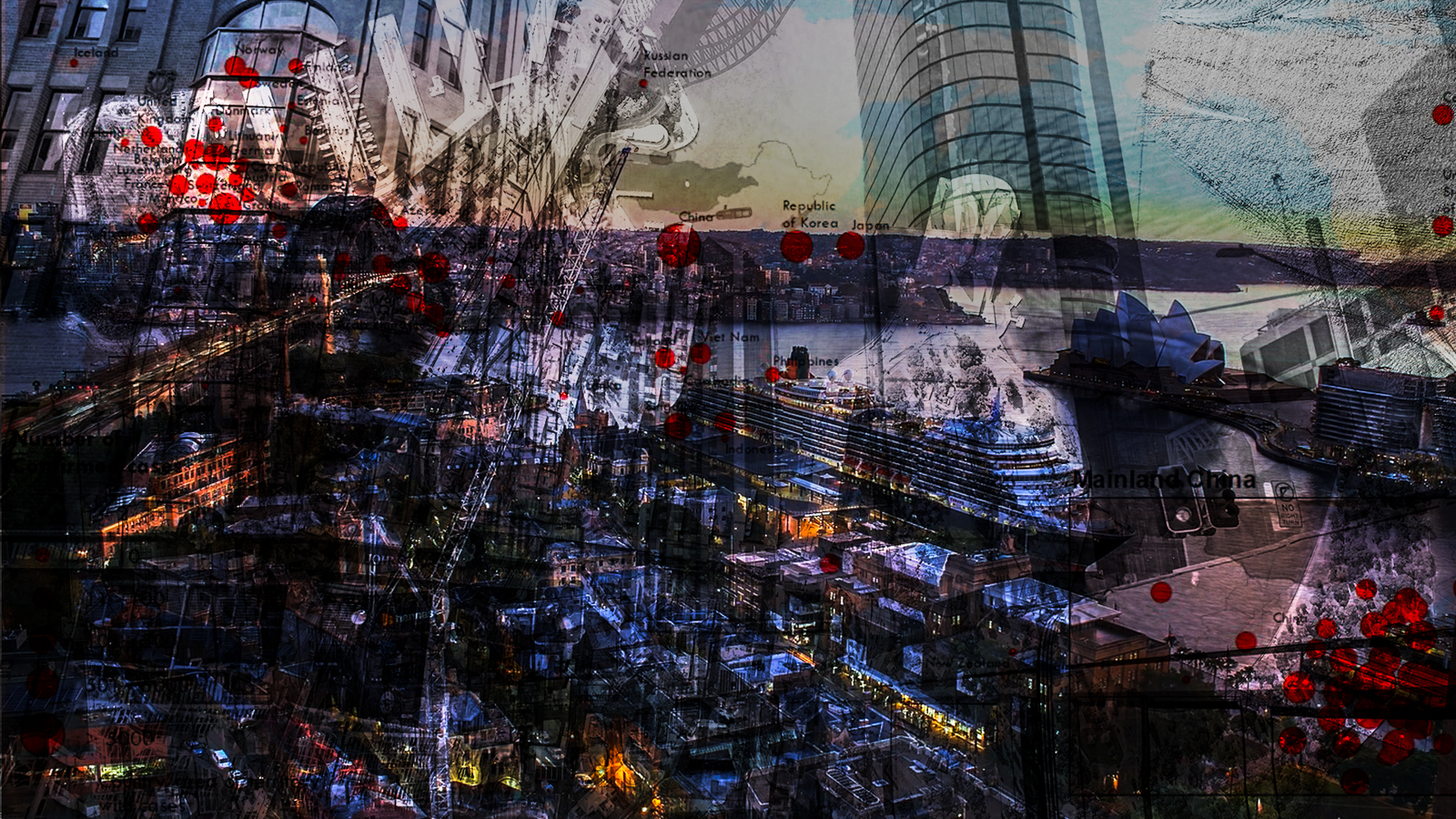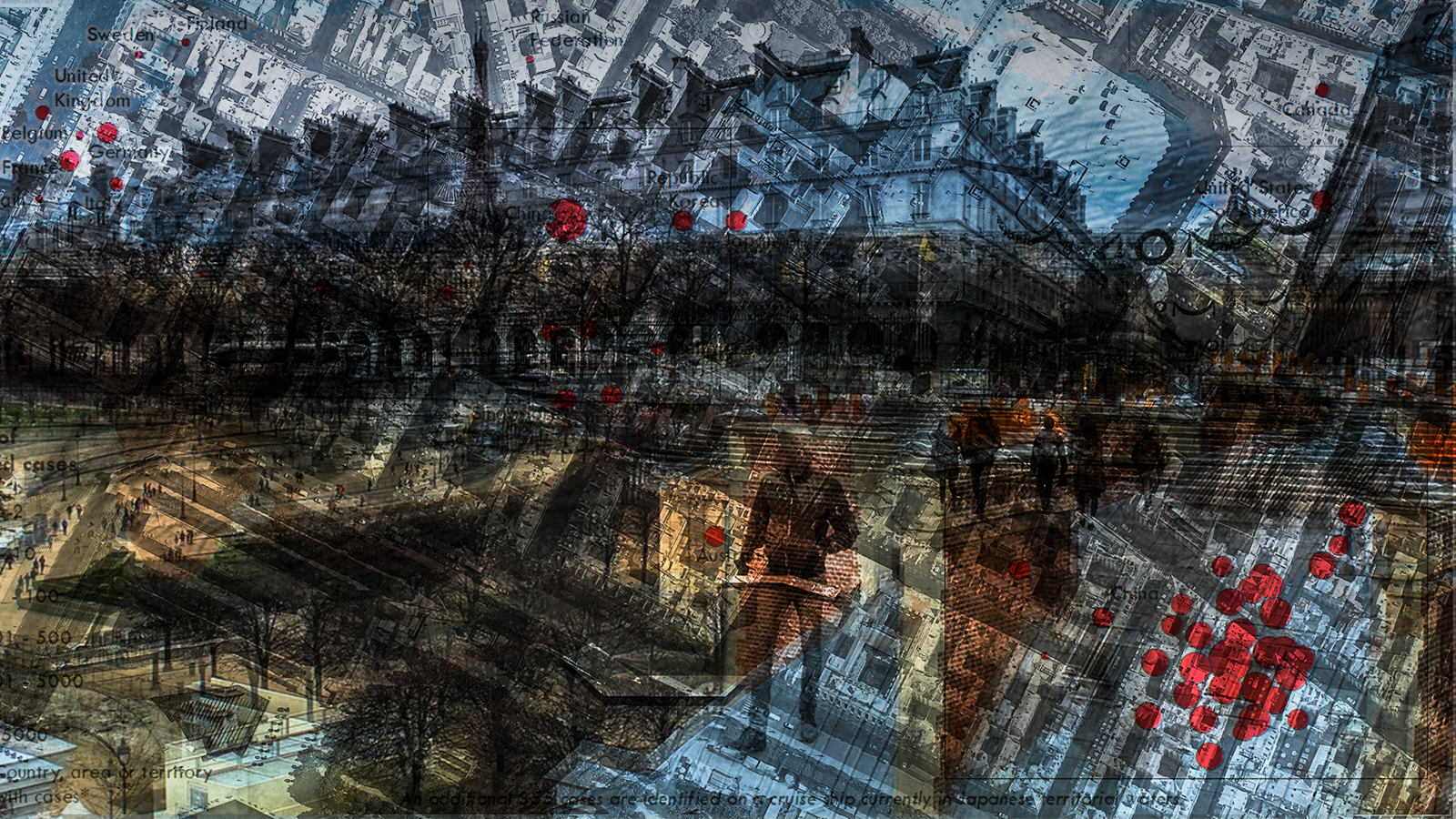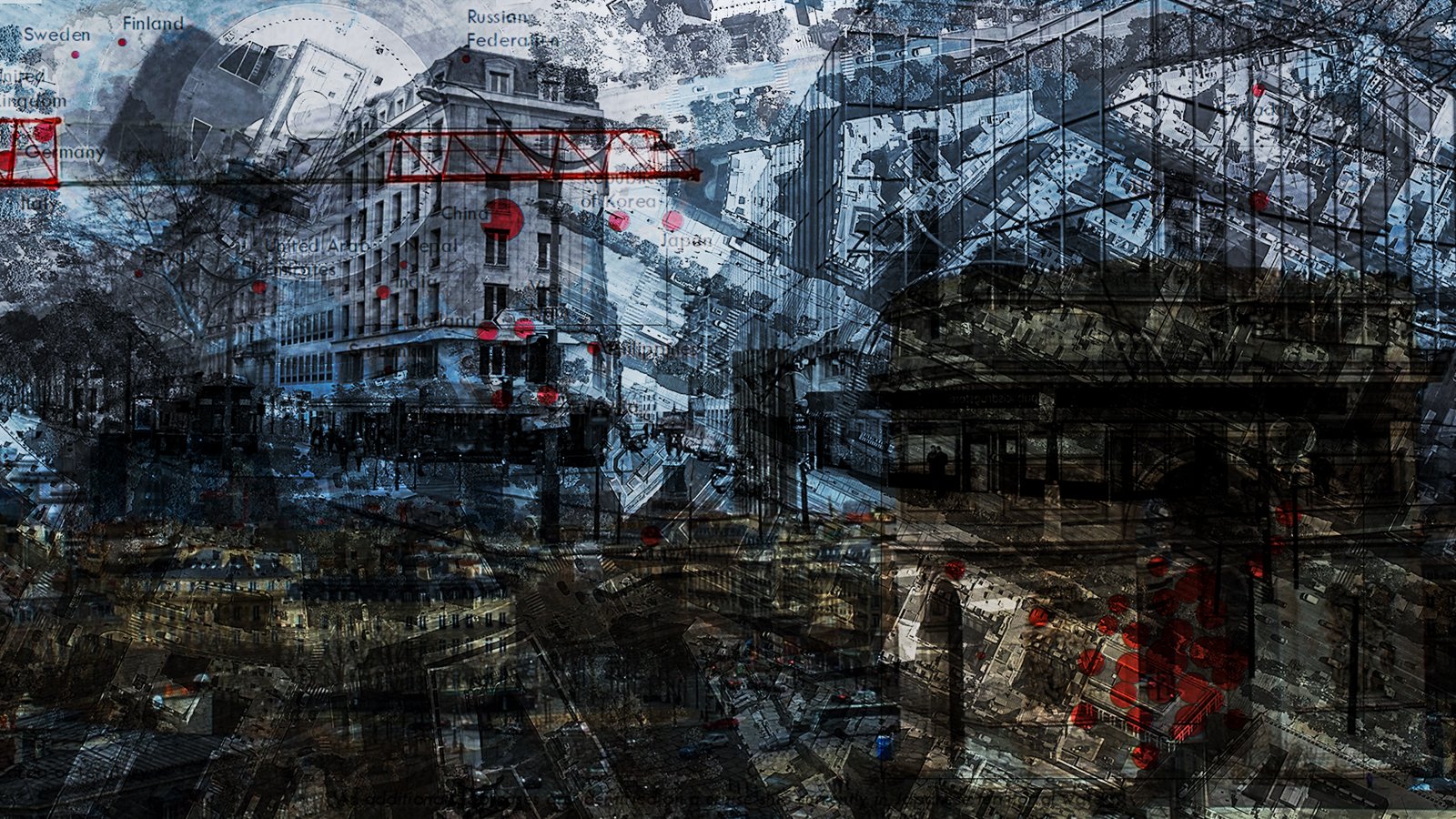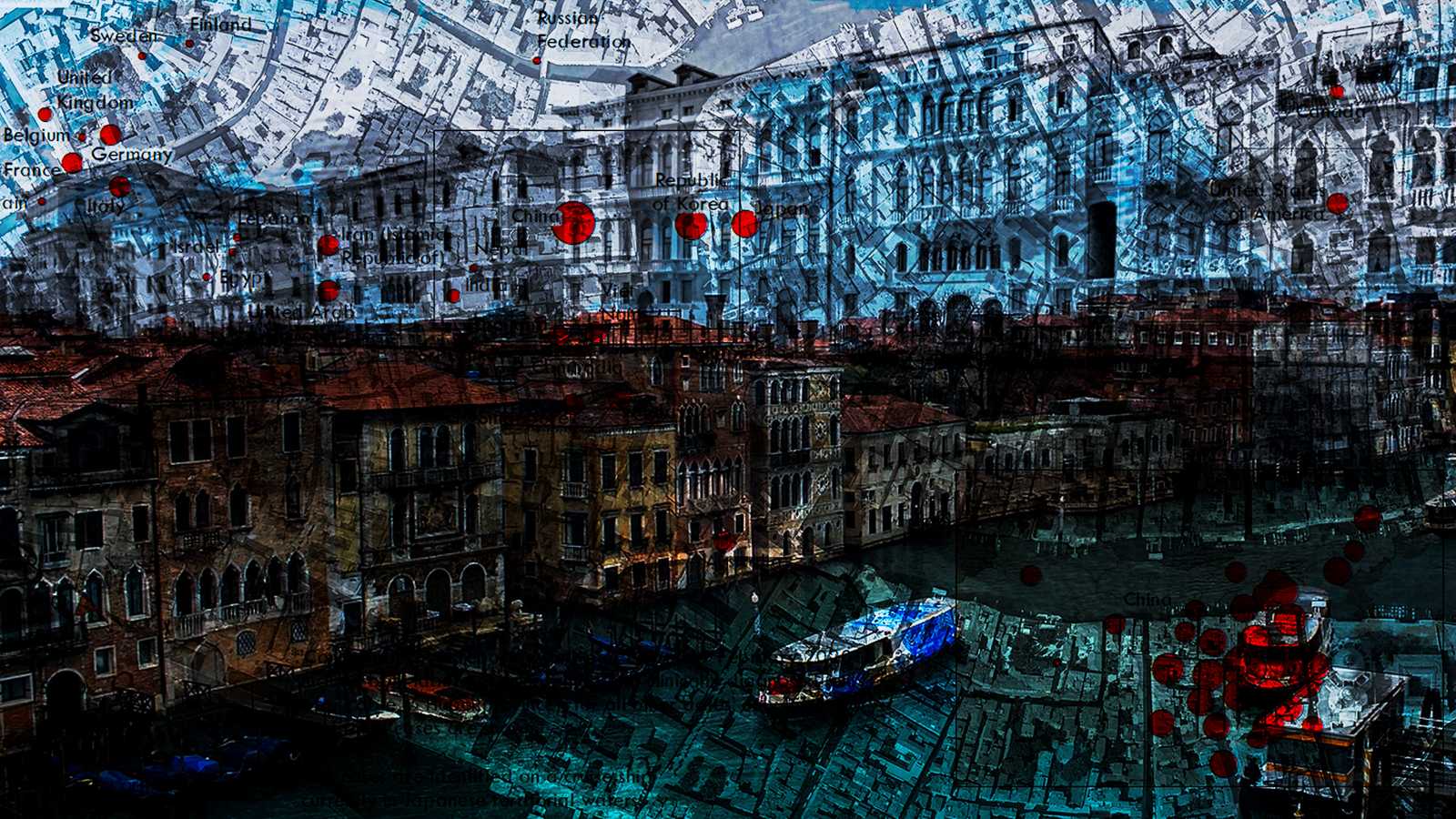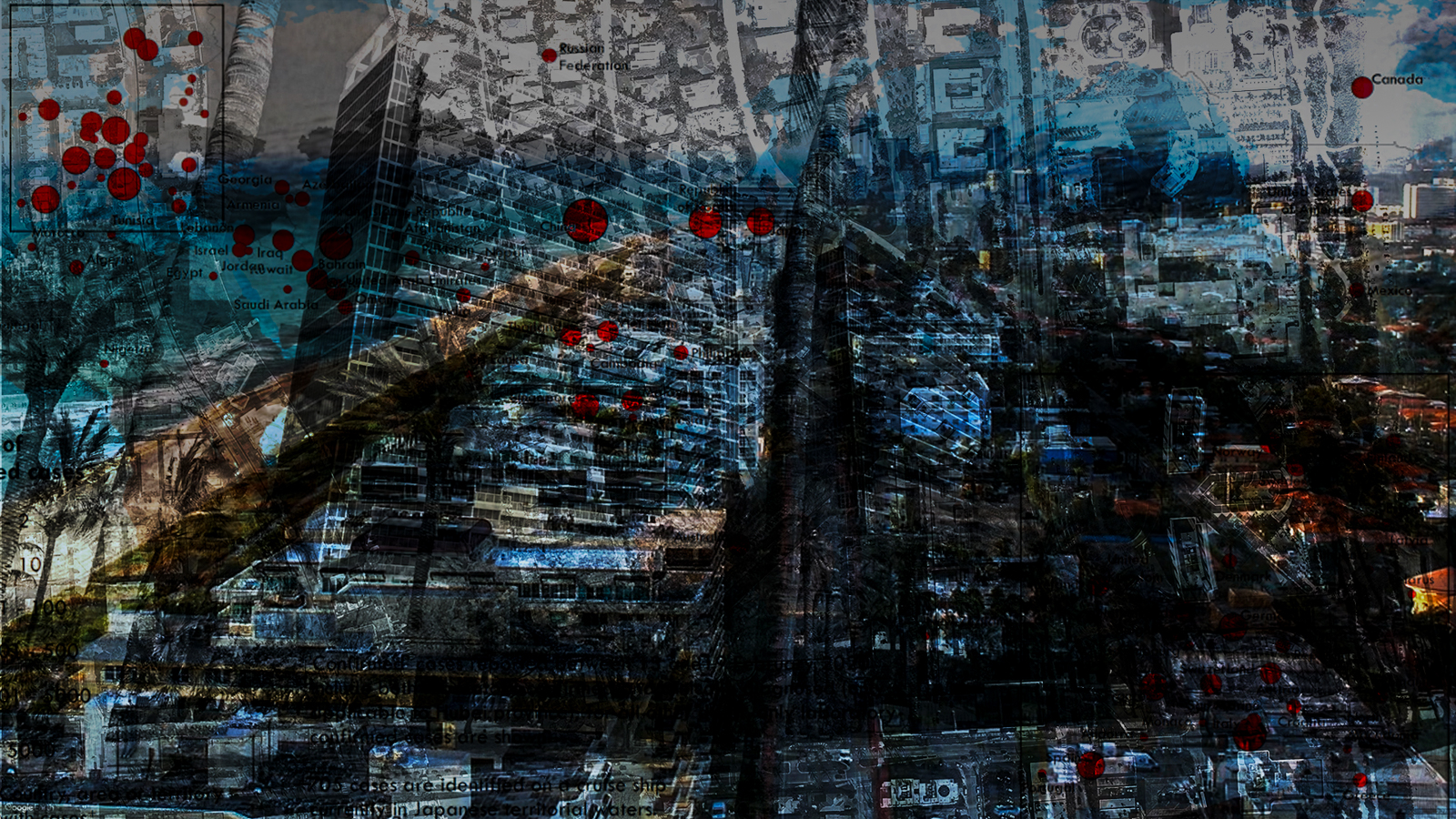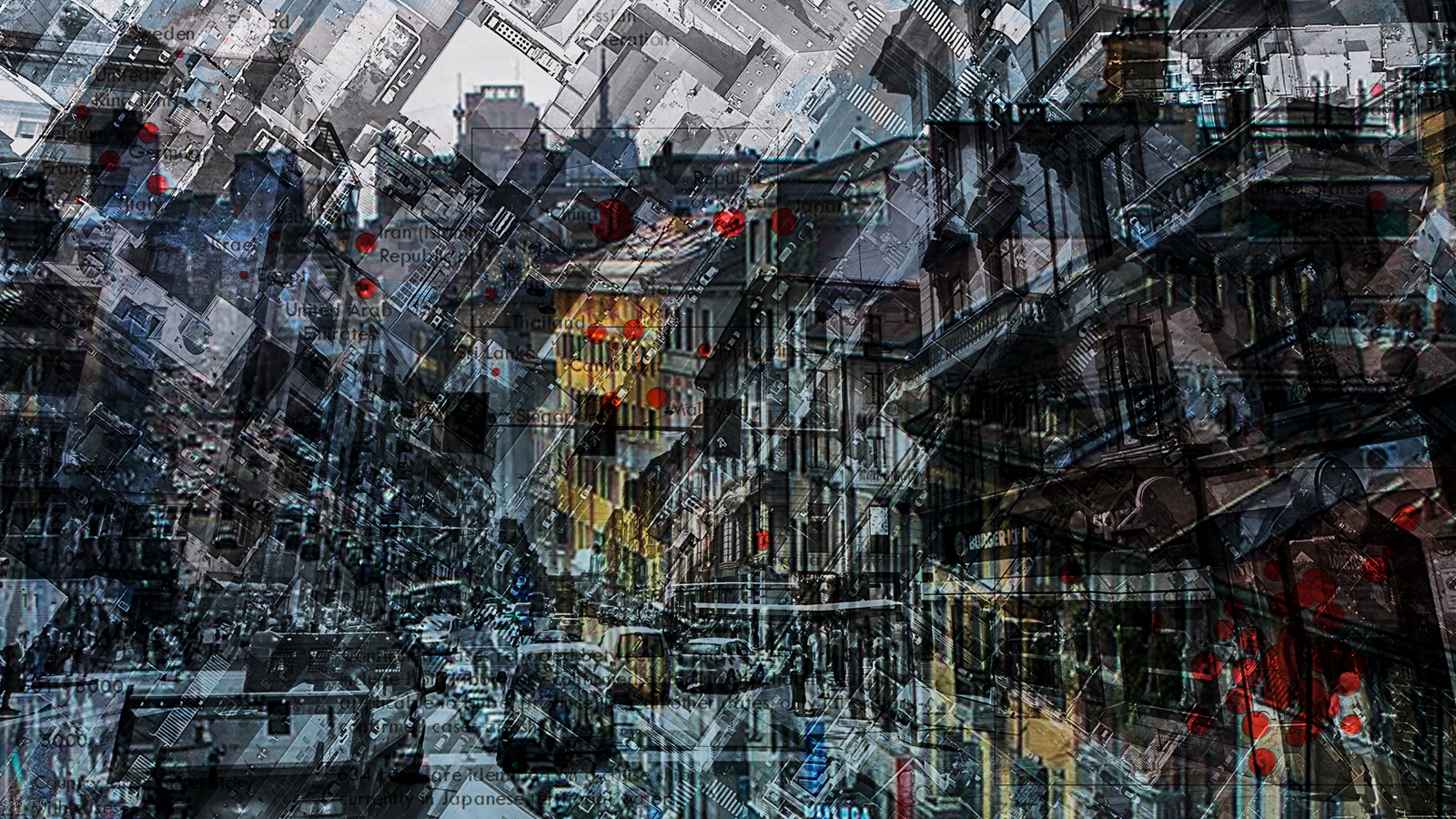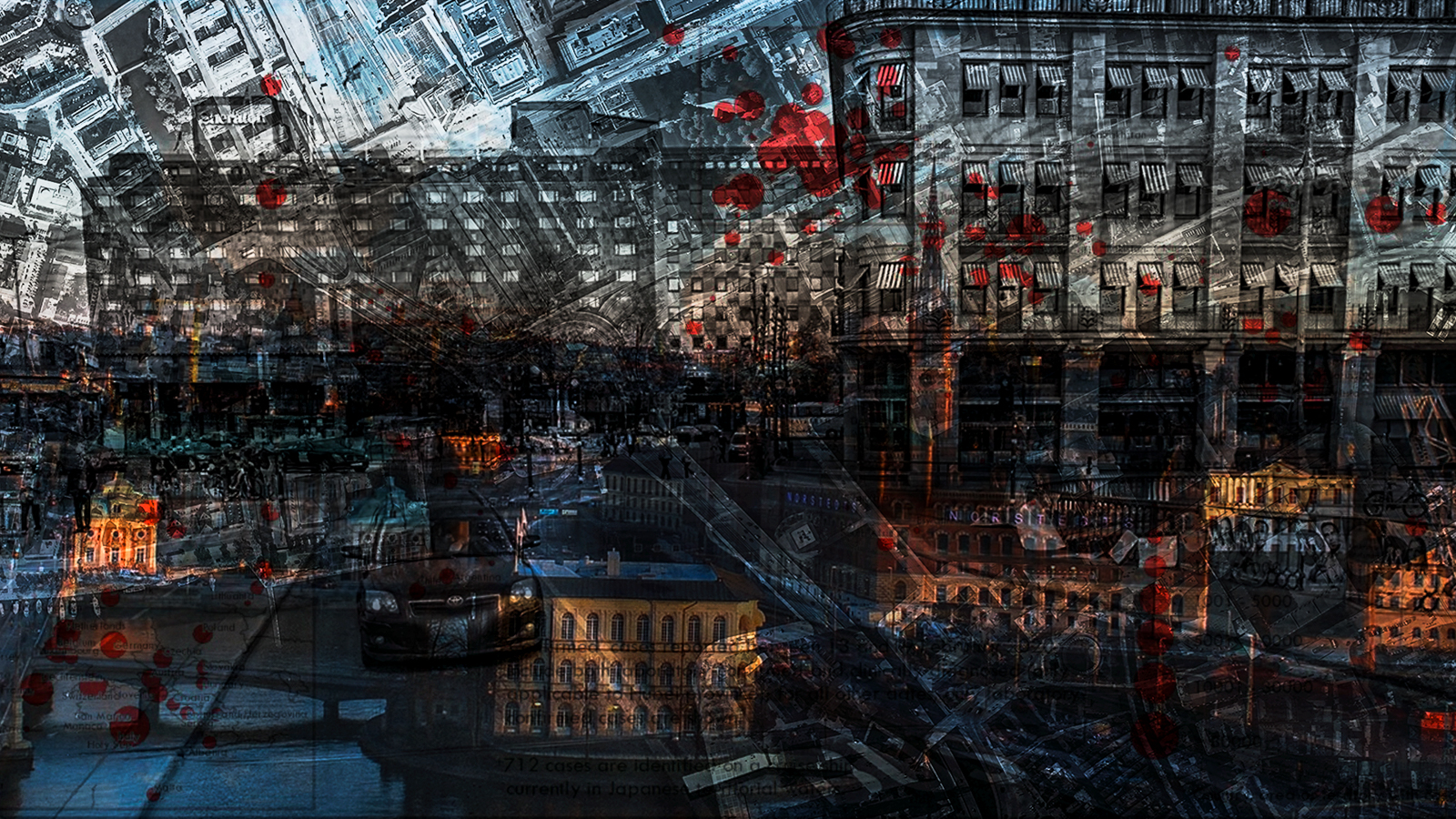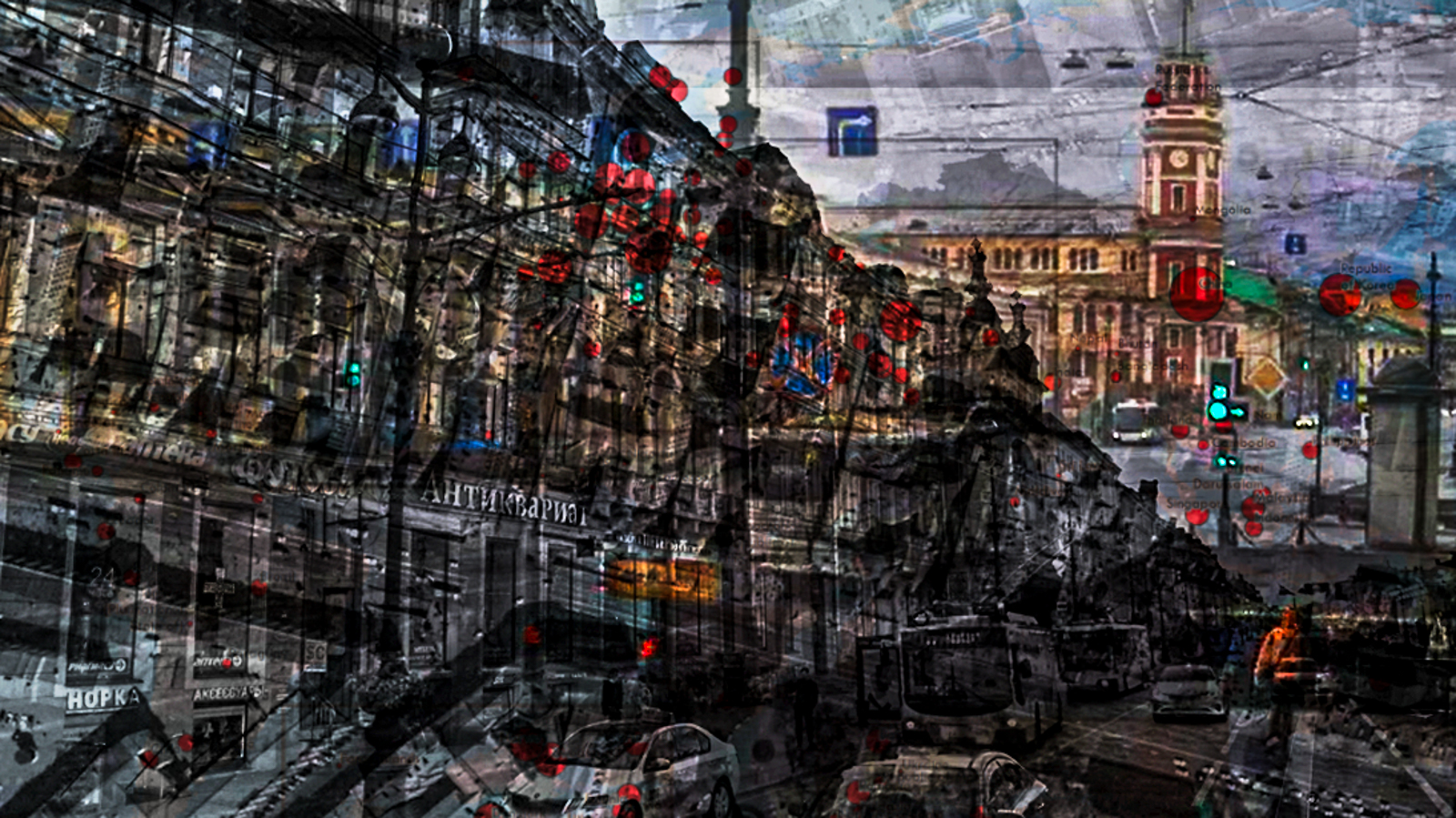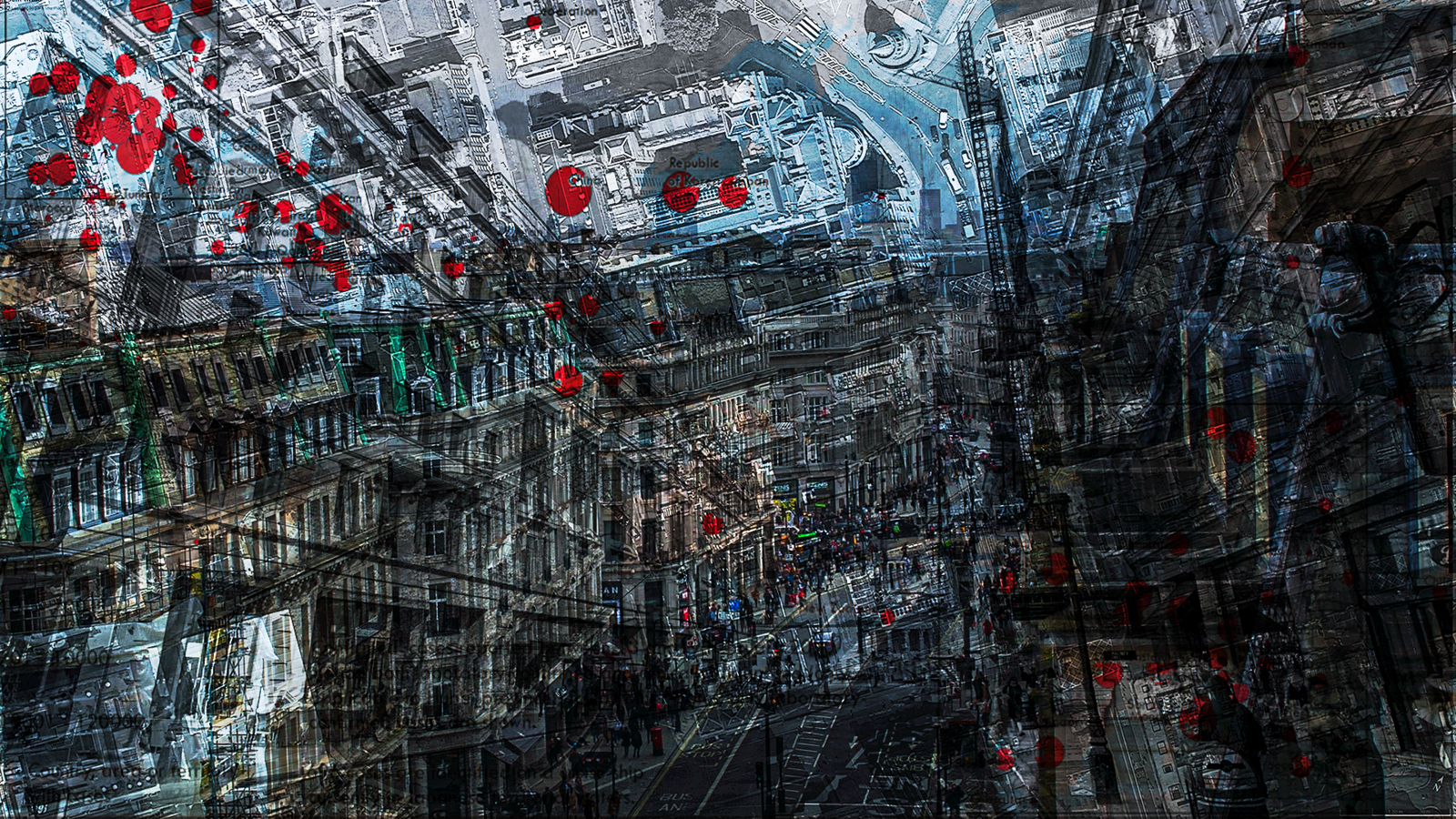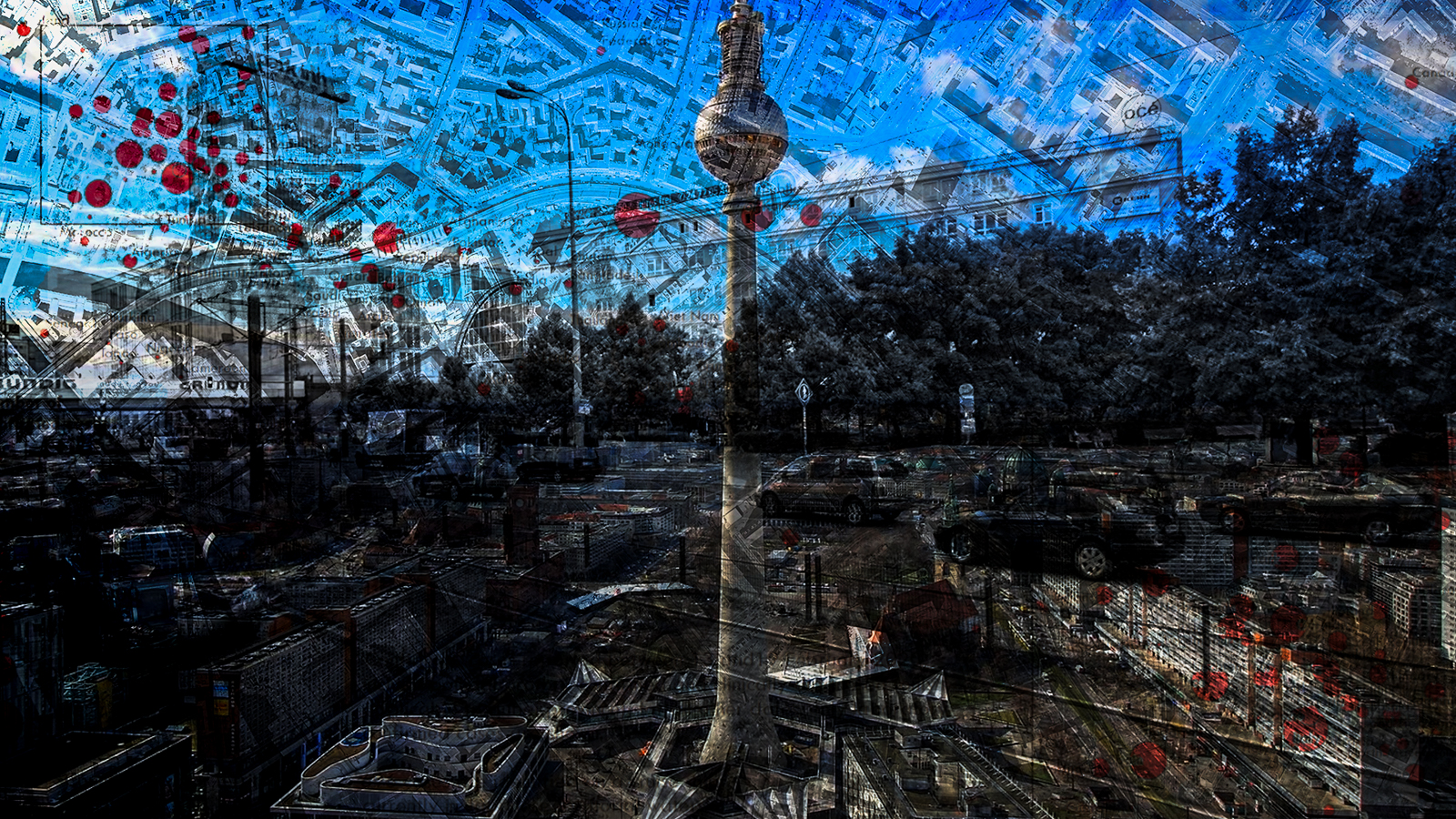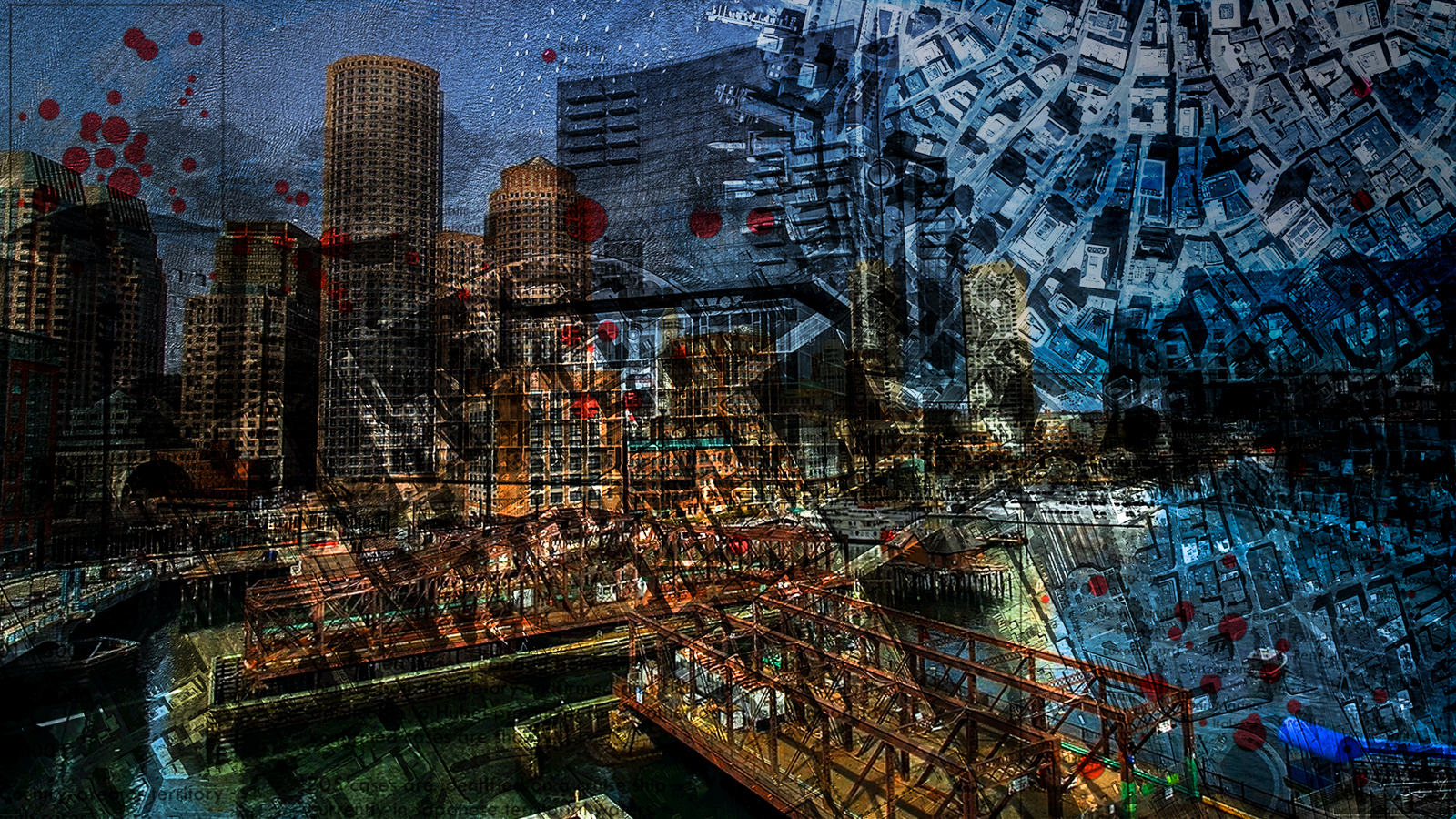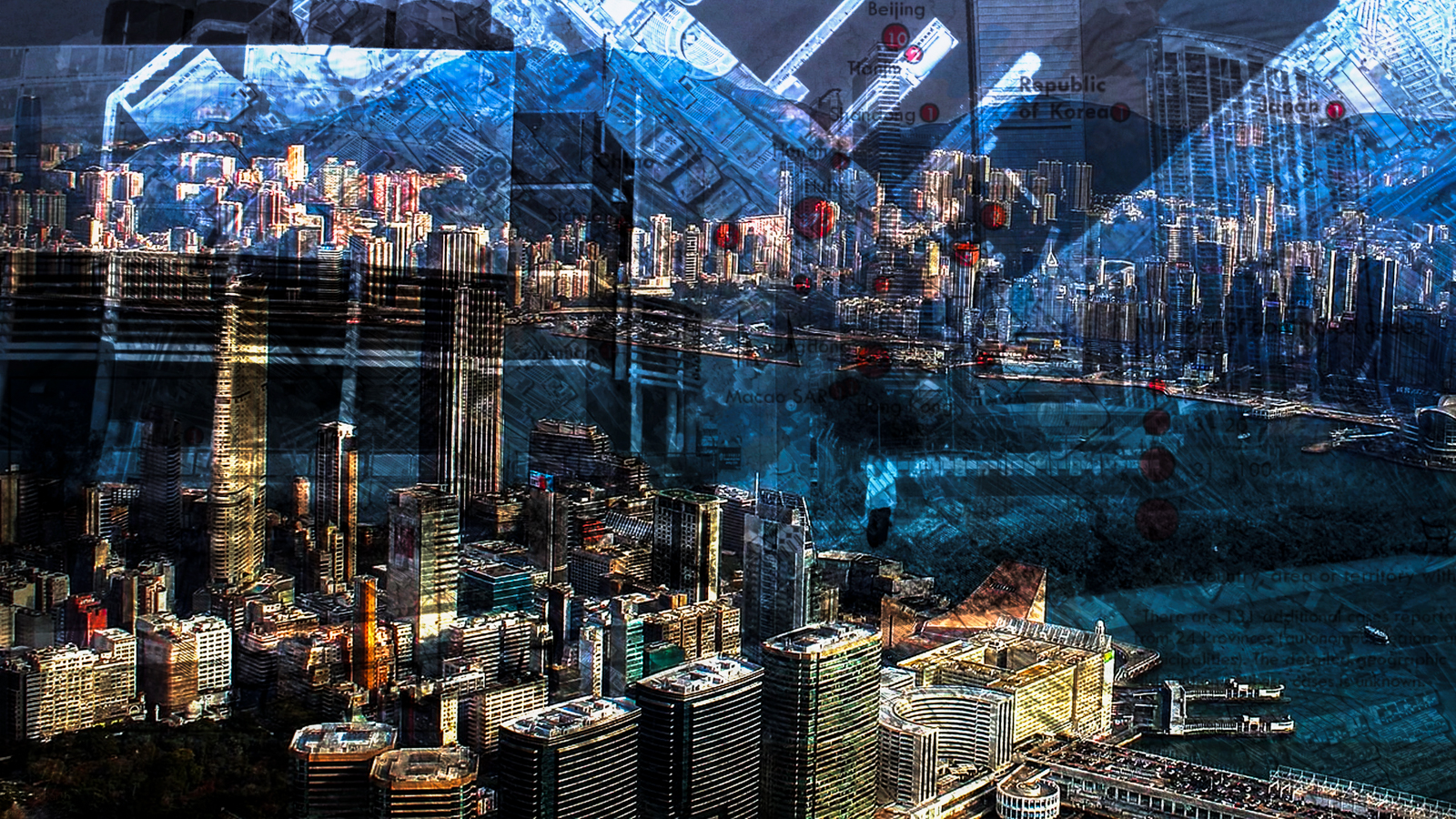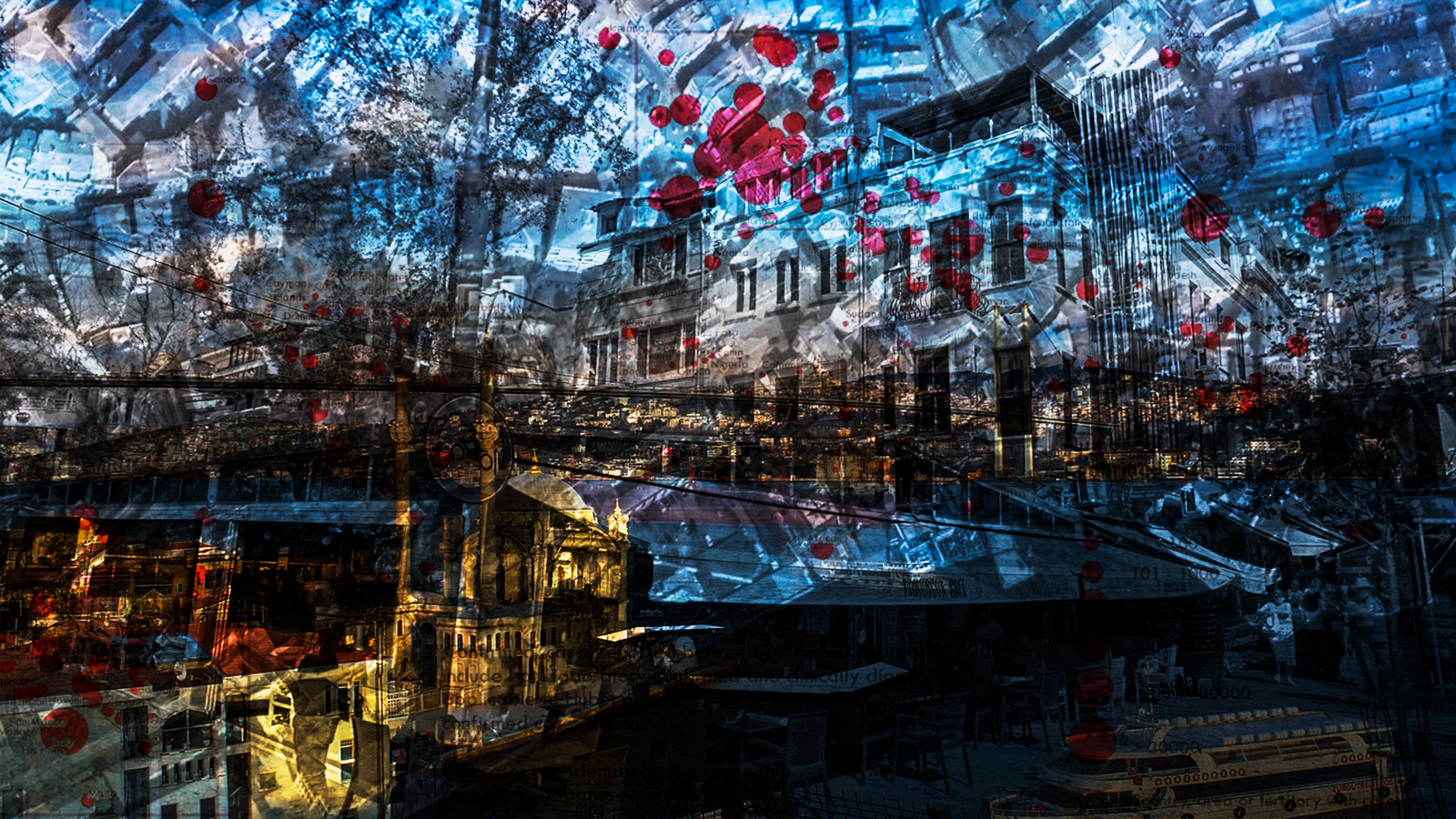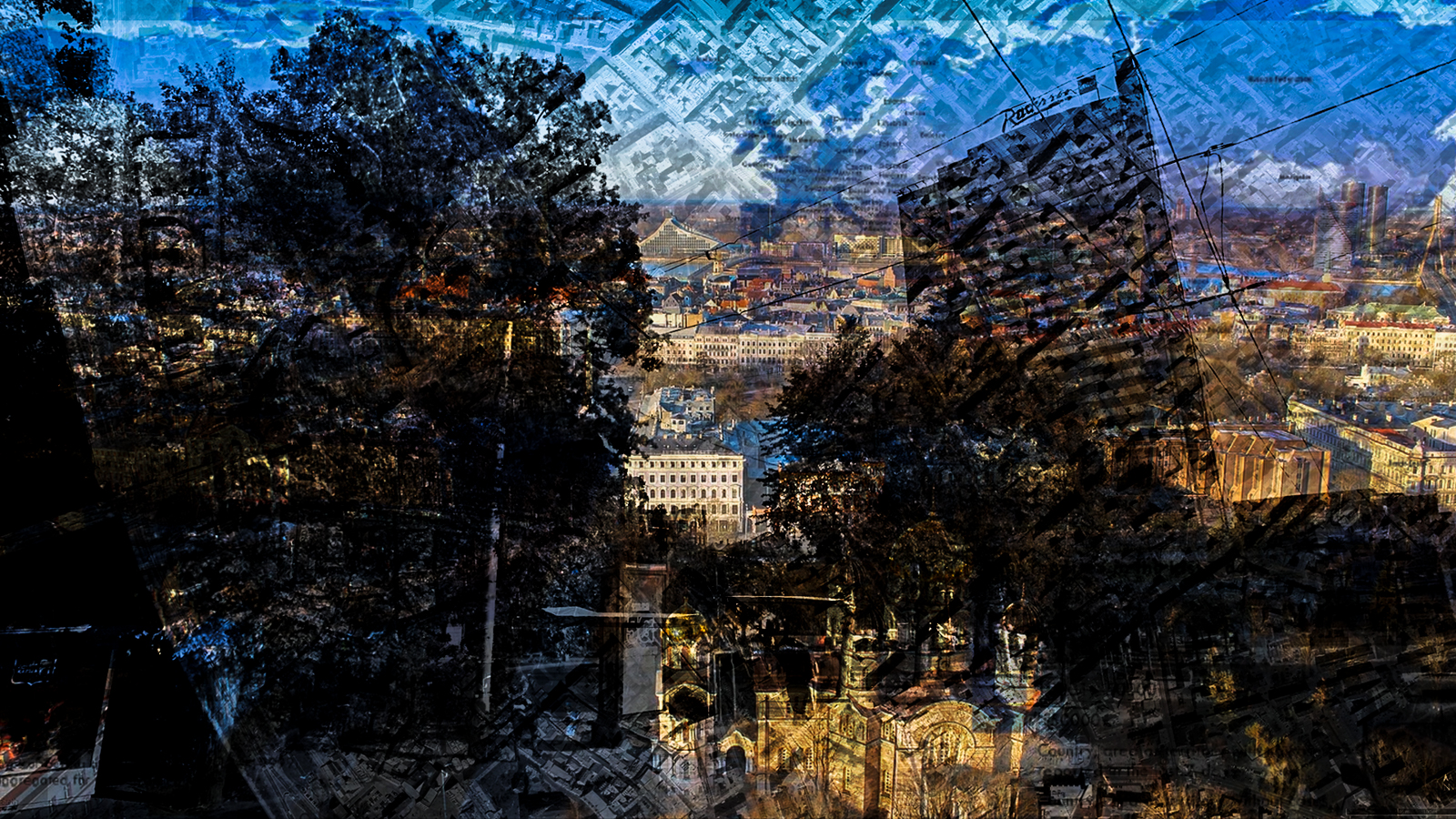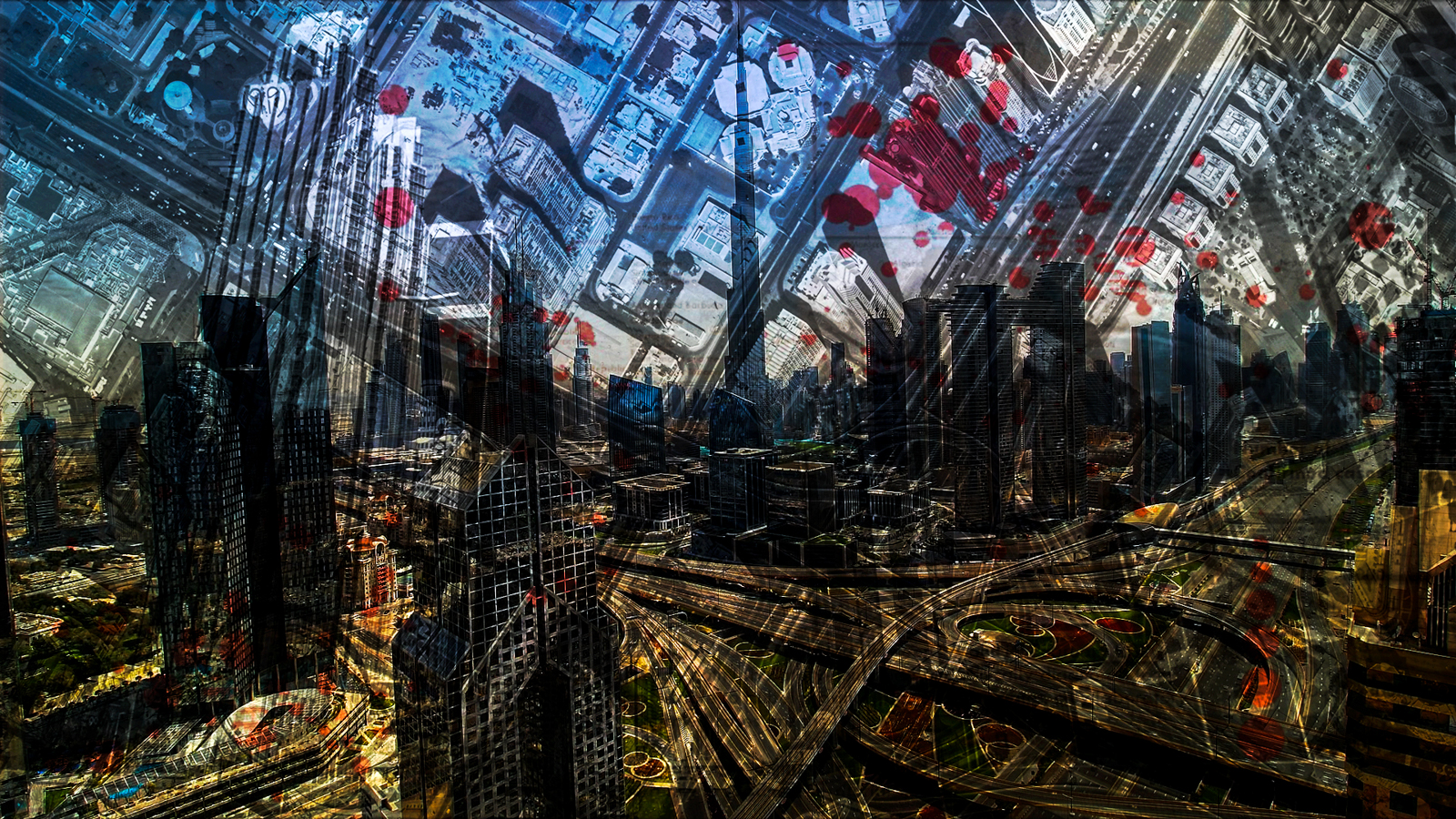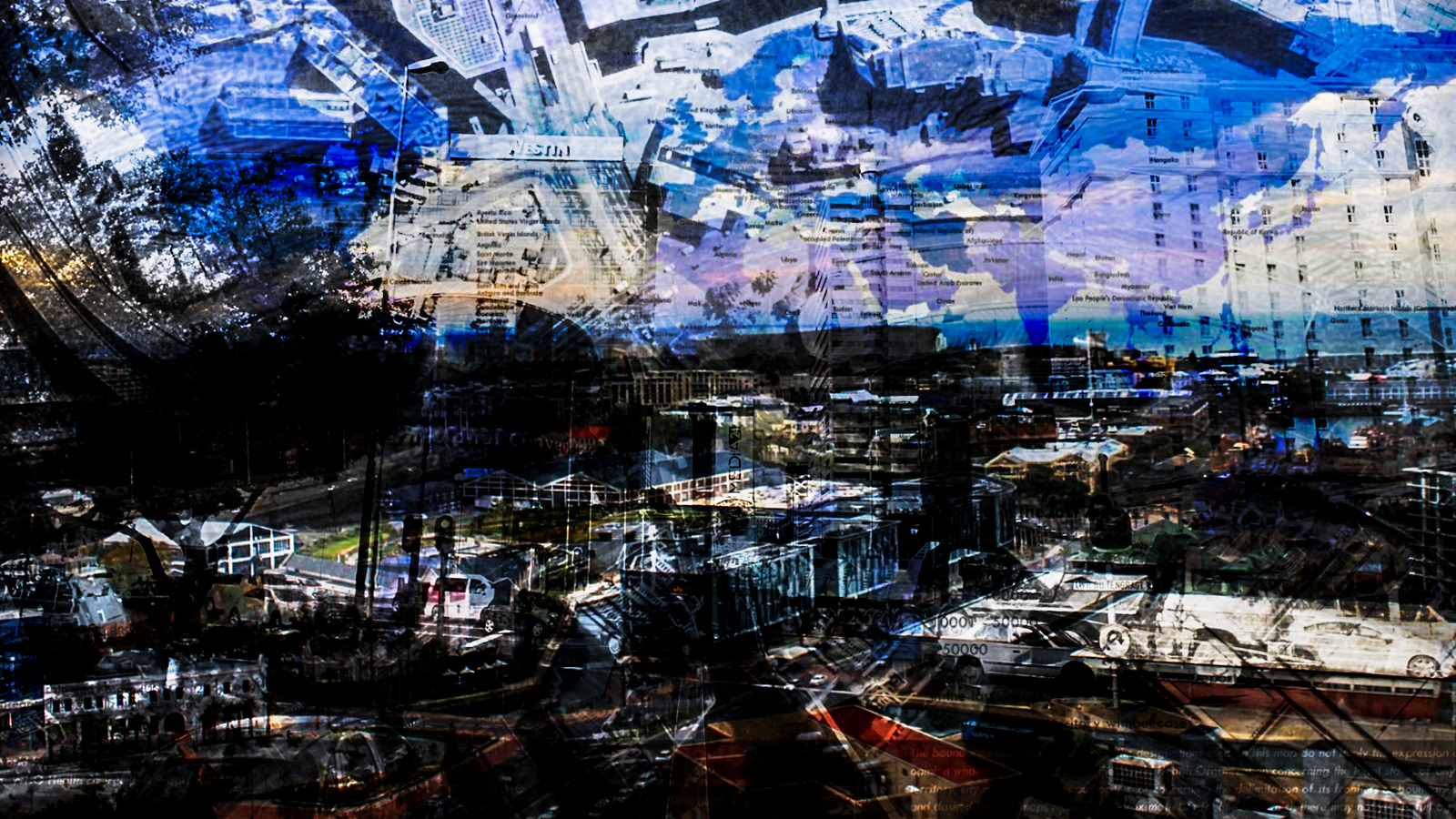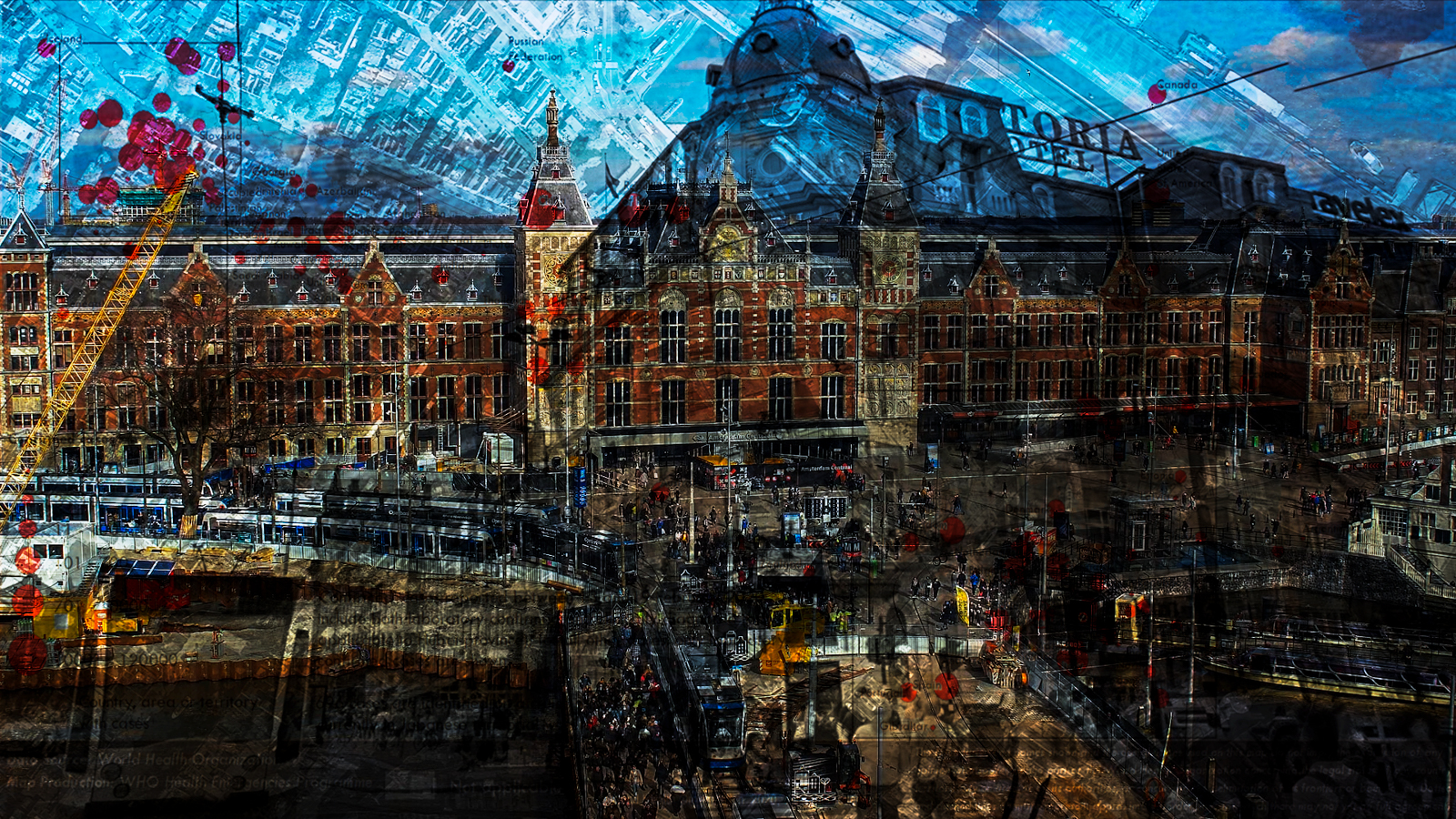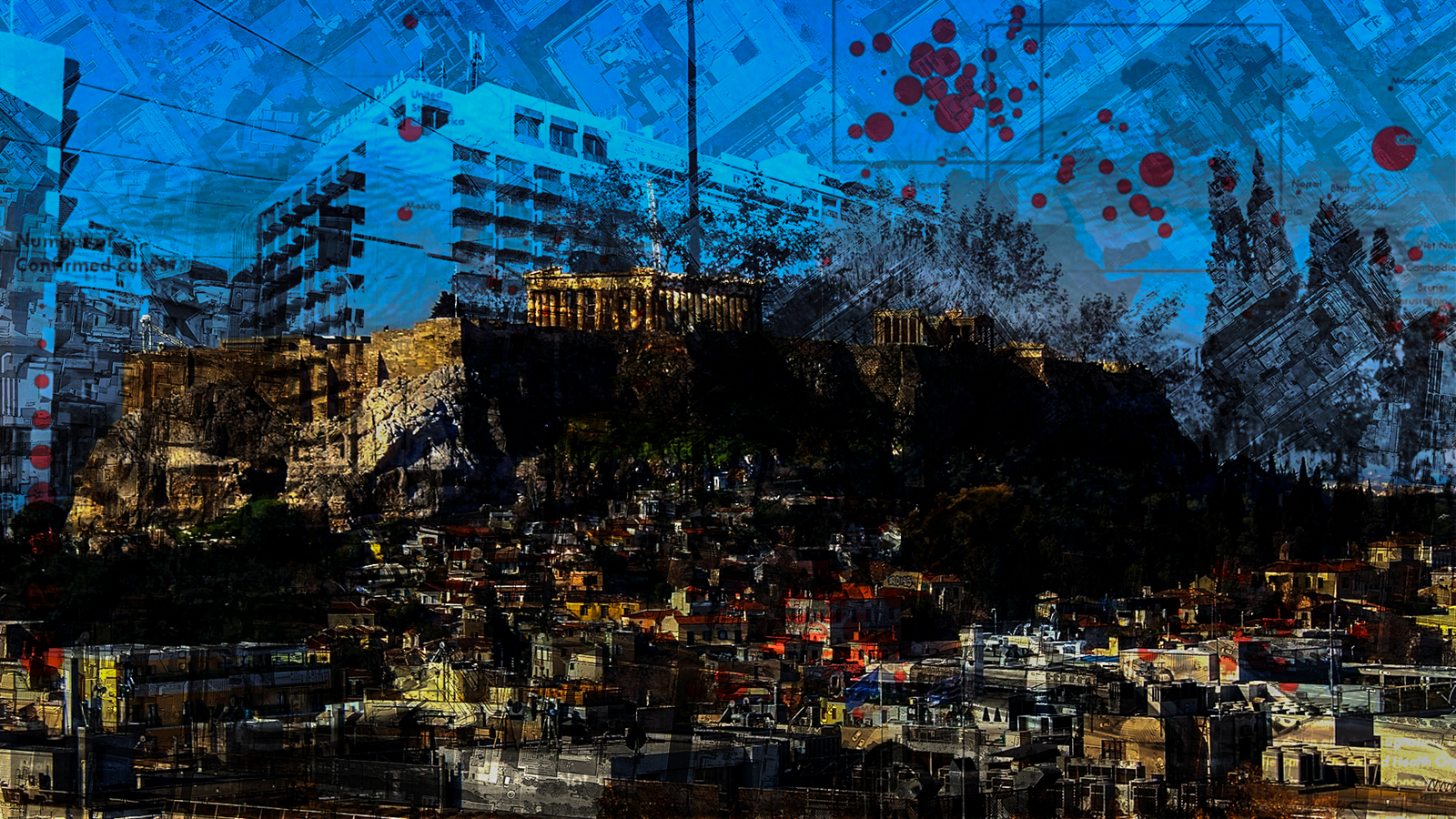nemo non videt
A humanidade, obrigada a se recolher, busca sobreviver. A anterior pulsação dos grandes centros urbanos, paisagens artificiais forjadas pela mão humana, esvai-se pela ausência das pessoas. O iminente perigo de morte e o instinto de sobrevivência, que levam ao isolamento social, ressaltam a indistinção entre o ser humano e qualquer outra espécie vivente integrantes do mesmo organismo, vivo e complexo, chamado Terra.
As imagens, acúmulos sobrepostos de pontos de vista distintos de um mesmo local, aludem as práticas humanas antes do vírus: uma vida chamada normal. Esse modelo de normalidade é posto em xeque tanto pela adição, como camada imagética, do mapa temático da expansão do Covid-19 a partir da primeira vítima fatal dessas paisagens, quanto pelo valor dado às coisas criadas por essa mesma humanidade.
Os comportamentos humanos, agora diversos, prezam por uma garantia de sobrevivência frente à proximidade com a morte e pelo retorno das relações sociais físicas, agora nulas. Nota-se um caos silencioso dessas cidades esvaziadas, sem função e sem vida aparentes.
Destituídas de seu encargo original, as imagens das câmeras “ao vivo” e dos satélites (Google Earth e Street View, por exemplo), são apropriadas para constituírem-se como camadas de um tempo passado, no presente, ansioso para que exista um futuro. Essa incerteza temporal é o que me conduz a olhar, de dentro da minha casa para o mundo no qual ambos (eu e casa) estamos inseridos. Confinado, procuro pela vida; não a de antes, mas a que virá.
Quando apenas a incerteza existe, afloram imagens cheias de outras imagens: um acúmulo do prévio no vazio do agora. Sem encerrar-se em si mesmo, “Nemo non videt” (literalmente 'ninguém não vê'), usa do Argus mecânico humano para duvidar se, de fato, “Todos veem”.
RECOVERY is structured from the superposition of simple shapes, such as square and rectangles, that alternate in different layers and blending modes. In this scenario, visual complexity is revealed at different times and intensities, offering countless possibilities of perception.
Humankind, now forced to stay indoors, seeks to survive. Previous vibrant big cities, with human-made scenery, fading away due to the absence of people. The imminent danger of death and the survival instinct leading to social isolation, point out the indistinctness between human beings and any other living species that are part of the same living and complex organism: Earth.
The images, accumulated layers of different viewpoints of a place, refer to human practices prior to the virus: a normal life. Normal as a model is challenged both by the addition, as an imagery layer, of the thematic map of the Covid-19 dissemination from the first fatal victim of these sceneries, and by the value given to things created by that same humankind.
Human behavior, now diverse, cherishes not only a certainty of survival in this time of proximity to death but also the return of face-to-face social relations, now cancelled. We can notice a silent chaos in these empty cities, with no apparent function or life.
Out of their original function, images from “live” cameras and satellites (Google Earth and Street View, for example), are hijacked to become layers of a past time, in the present, anxious for a future. This temporal uncertainty leads me to look from inside my home at the world in which both (me and my home) are in. Confined, I look for life; not the previous one, but the one to come.
When there is only uncertainty, images full of other images come out: an accumulation of the ‘prior to’ in the void of the present. Not inward-looking, “Nemo non videt” (literally 'no one does not see'), resorts to the human mechanical Argus to question whether, in fact, “Everyone sees”.

